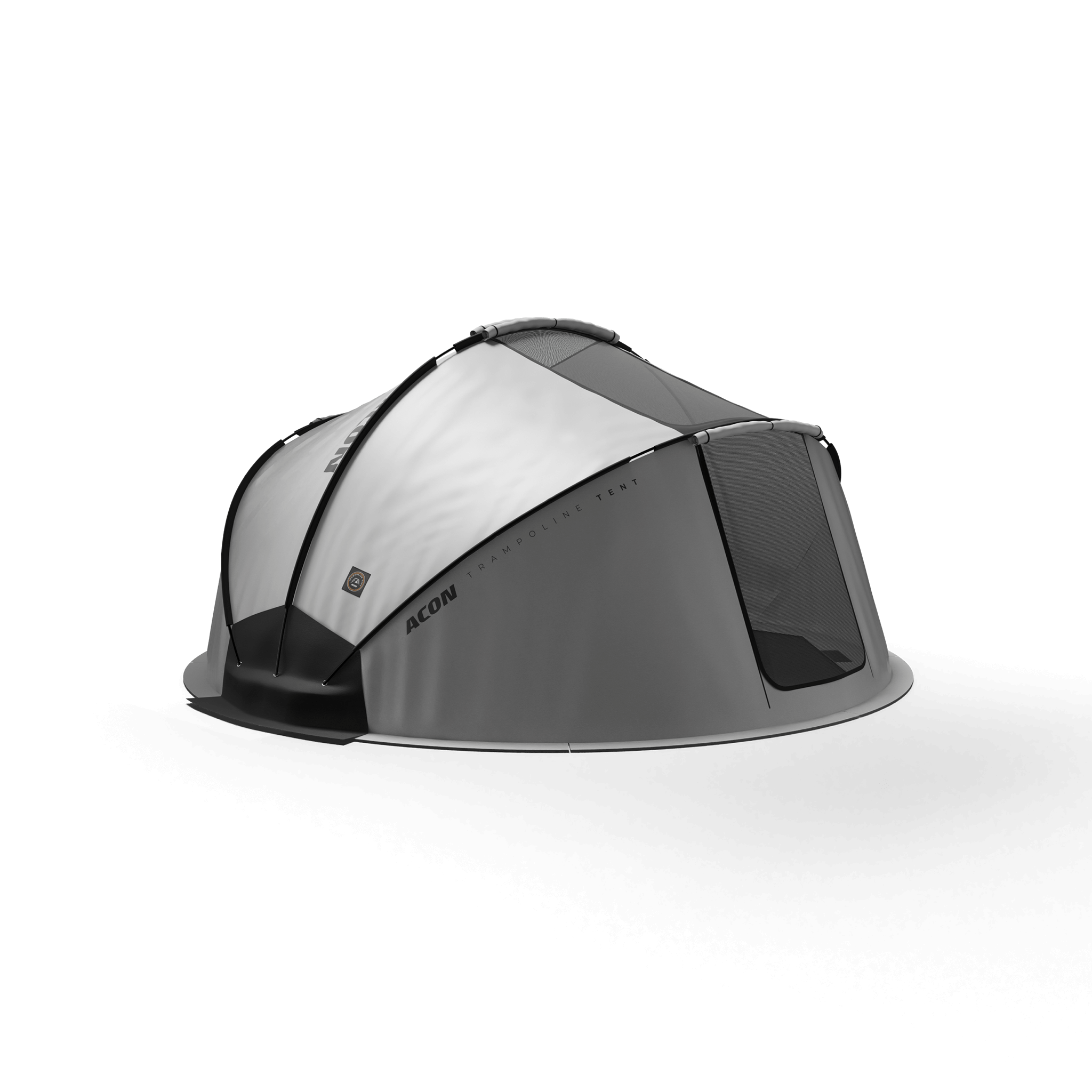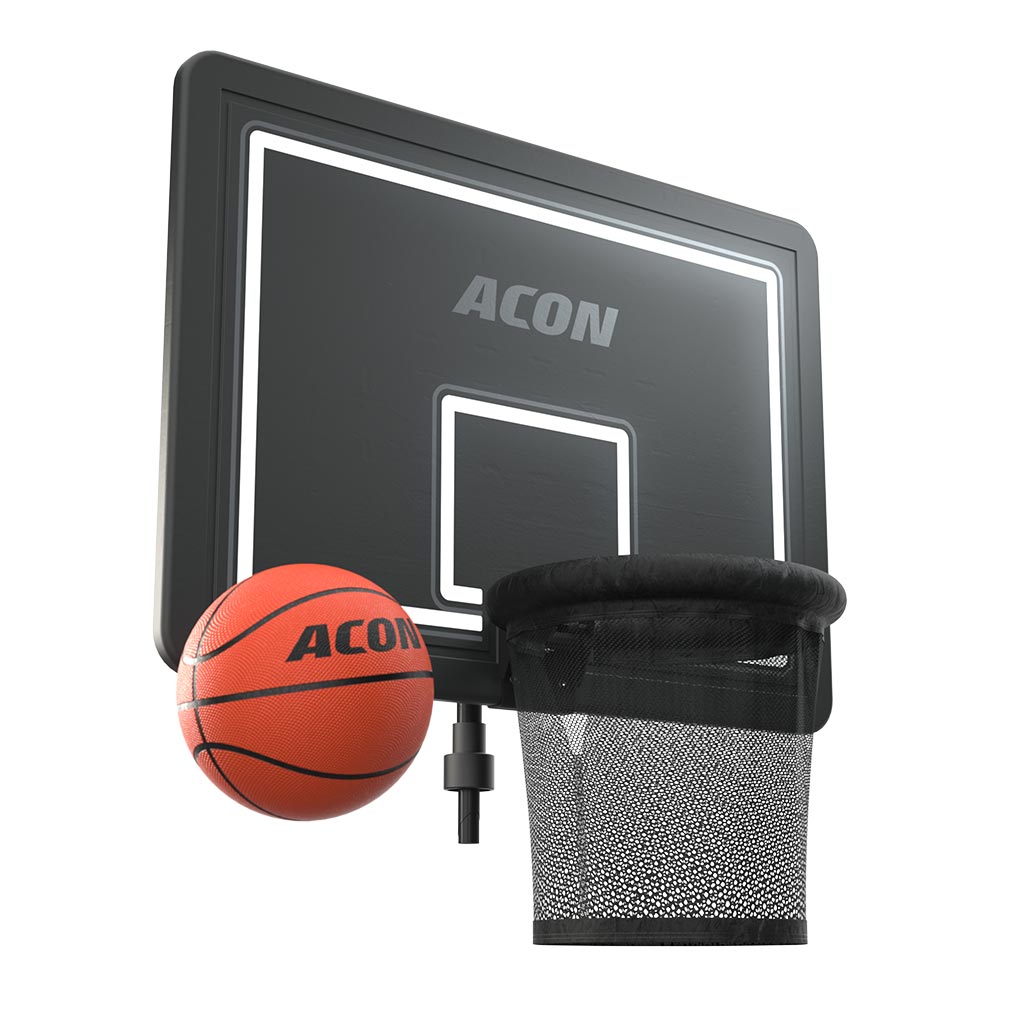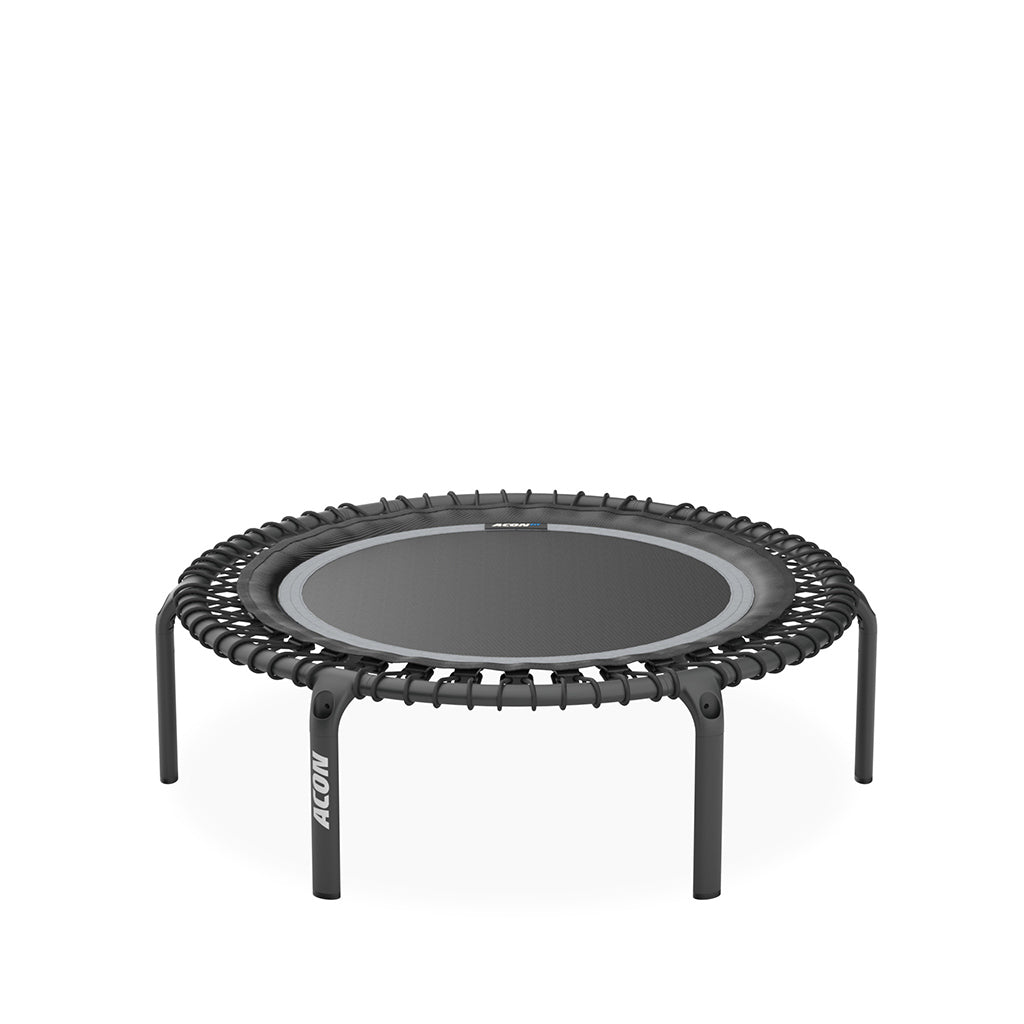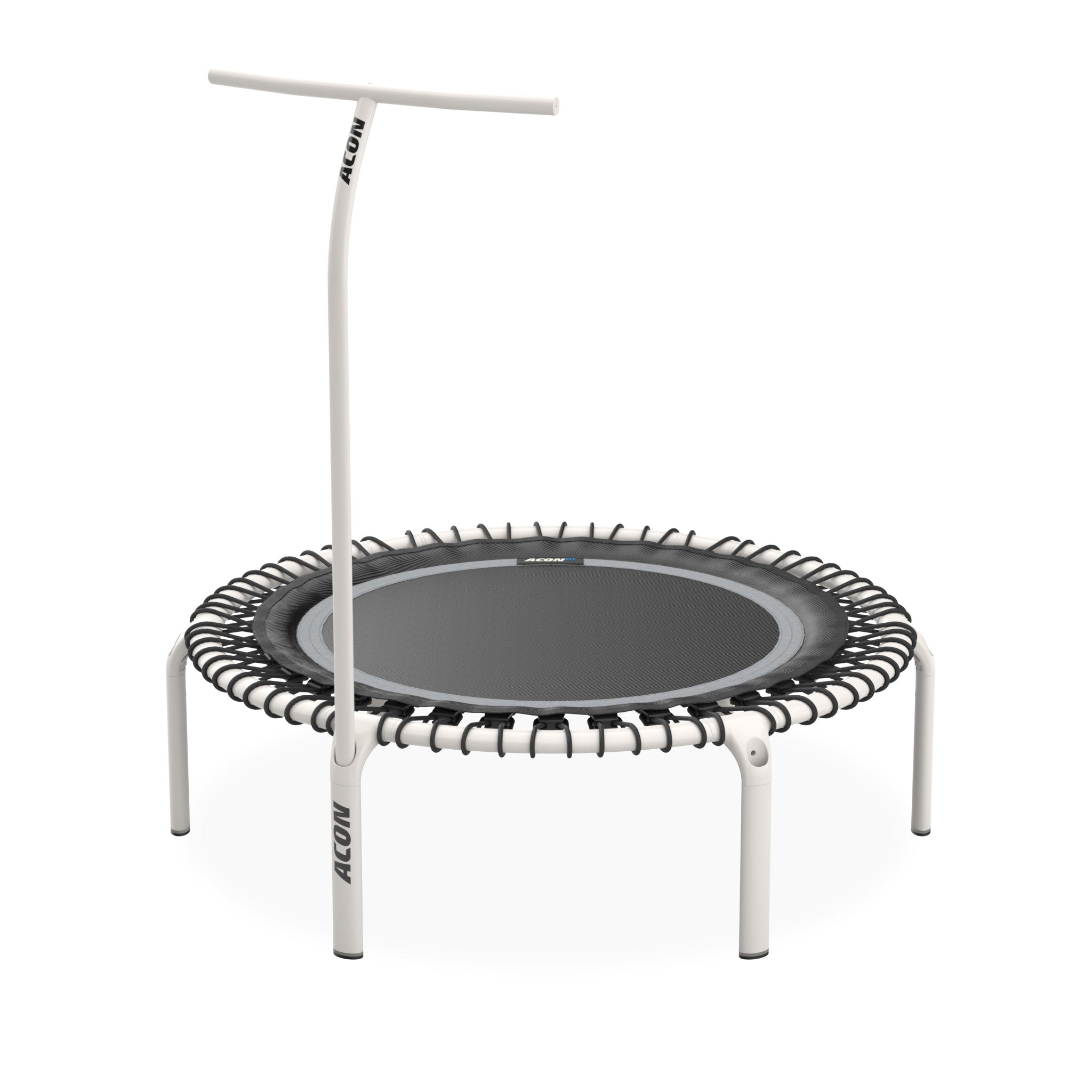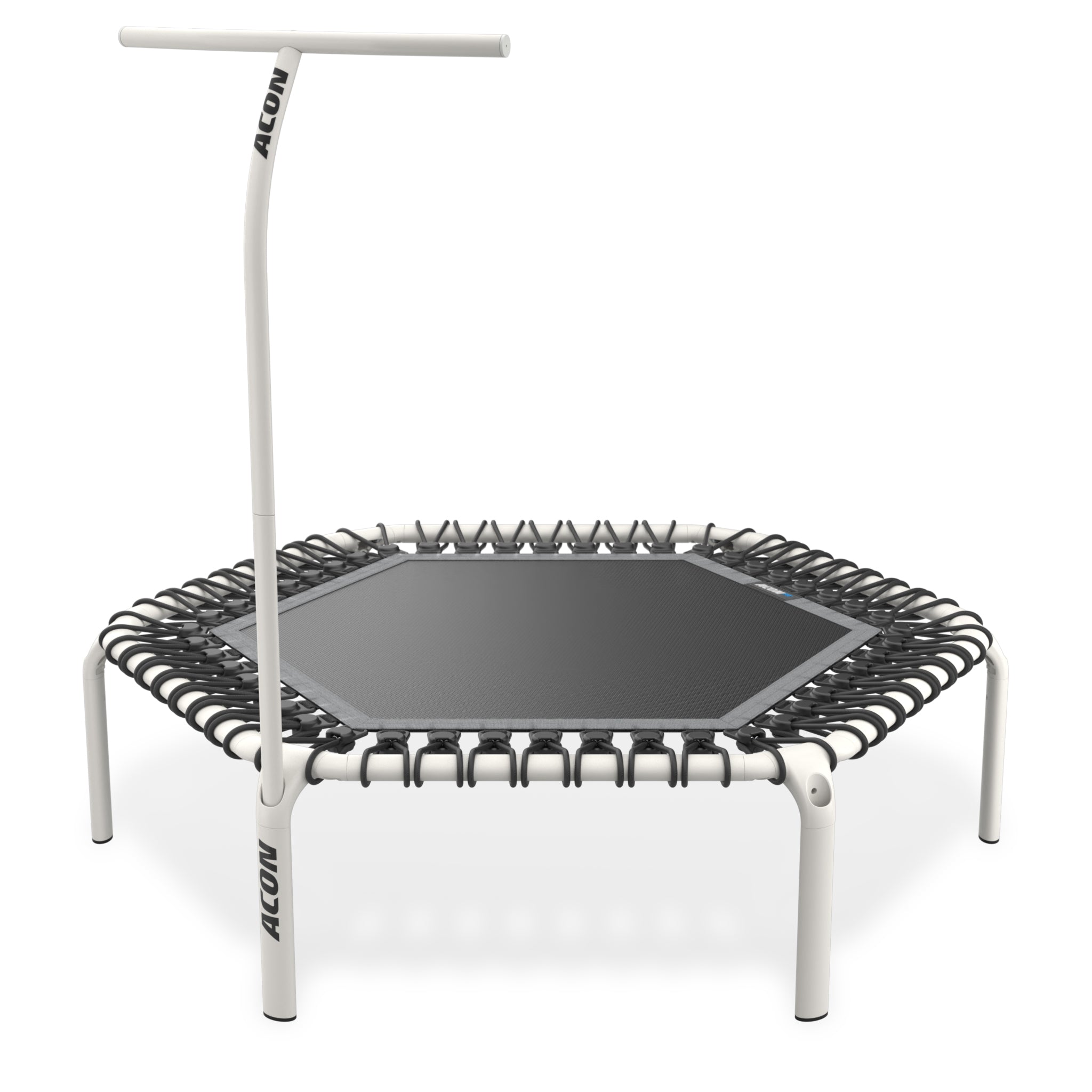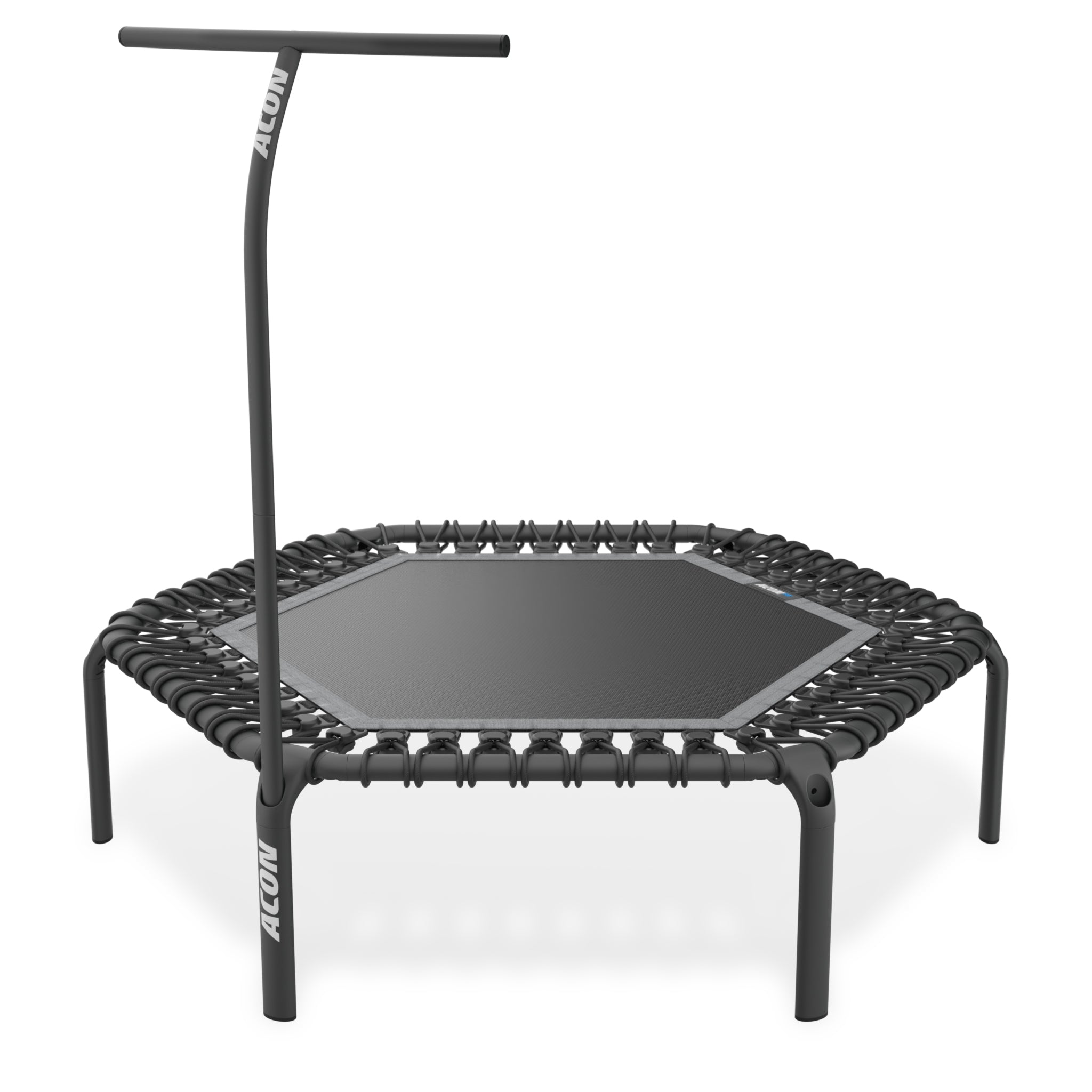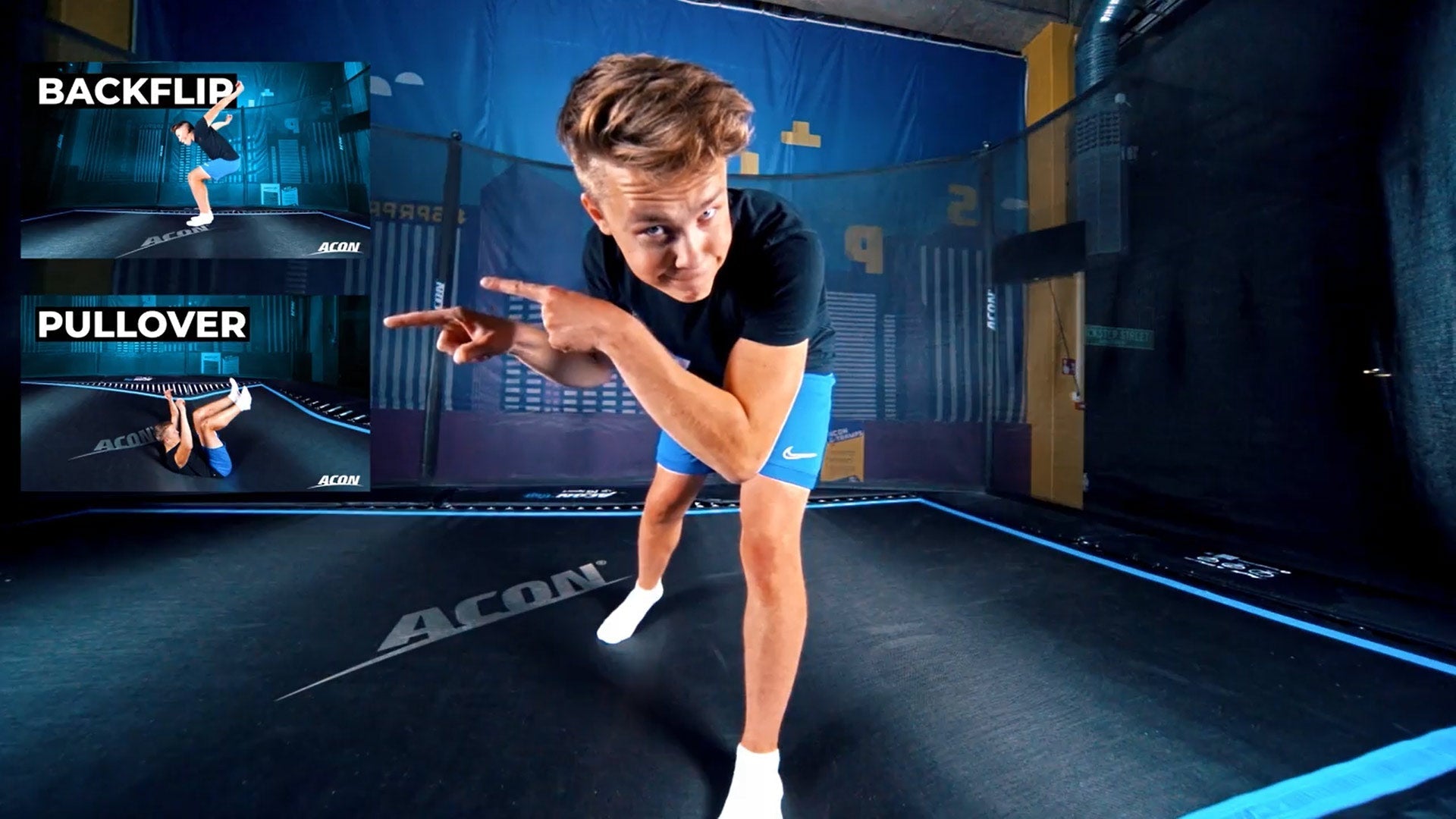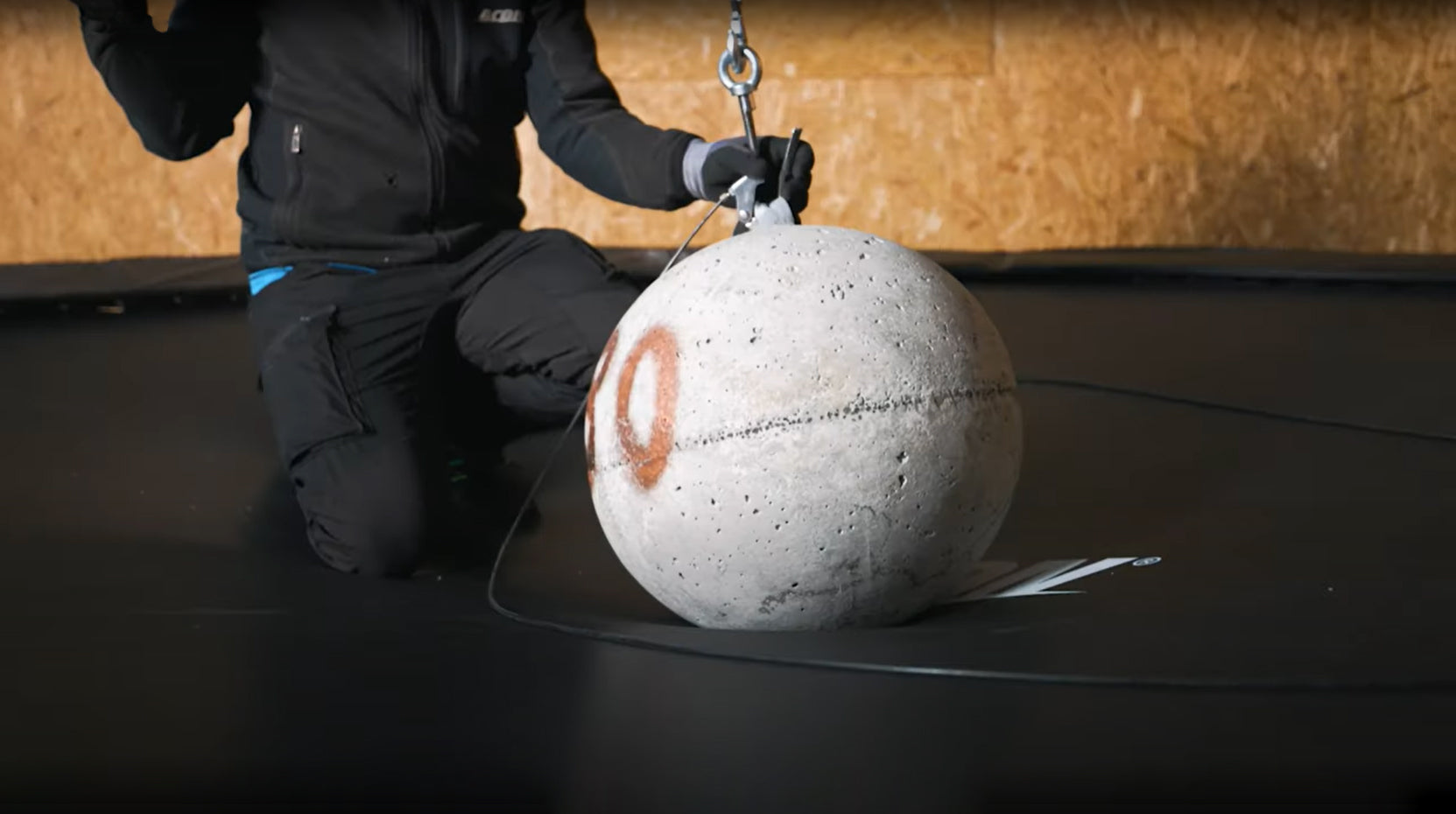Distributacon Inc.
1250 Wayzata Blvd E Unit 1127,
Wayzata, MN 55391, USA
Trampolining as an effective workout is growing in popularity. People young and old are getting hooked on rebounding and discovering the immense benefits of this low impact exercise. But did you know that trampolining works your muscles well, too?
We are pleased to report that it does but what muscles does trampolining work effectively?
Does Trampolining Build Muscle or Mass?
Trampolining works a whole load of body muscles and when you combine rebounding with other strengthening exercises, like weights, the effect is even better. If you’re thinking about starting, explore our trampoline finder to see which trampoline might suit you.

We all know that rebounding gives you a good cardio workout, but it will also strengthen and tone muscles. But does rebounding build muscle? Rebounding can build and define muscles, as all active training, but don’t worry, you won’t be building huge biceps or bulging thighs. That’s because it works by strengthening and toning your muscles, not by building muscle mass.
Trampolining is an exercise that suits anyone, no matter age or level of fitness, to improve cardio and muscle tone without the disadvantages of high impact workouts. Your muscles are working hard but not your joints; there is far less jarring when rebounding. This means you can enjoy a low impact exercise routine with high impact results.

Five Muscles Trampolining Does Work
But what muscles do trampolines work? When bouncing on a trampoline, whether you are a new starter or an experienced rebounder, you will use several of your muscle groups to maintain rhythm, balance and consistency.
So, what muscles does rebounding on a trampoline work?
Core muscles
Imagine a ring of iron around the center of your body. That’s your core. It is your central support and protects your spine. The stronger it is, the more upright you will stand (good posture) and the less you suffer from various pains (back pain) and aches.
The great thing bouncing on a trampoline is that it doesn’t just work your abdominal muscles. It works your entire core; that’s your lower back muscles, your abdomen and your pelvic floor muscles. Besides the obvious long-term health benefits, having a strong core is beneficial for many other sports, such as dancing, biking, without worrying about straining the body and causing back pains. So the muscles involved in jumping does include the core as well. But what muscles are used for jumping? You probably guessed it.
Leg muscles
The problem with other forms of exercise to tone and strengthen your legs is that they have an impact on your joints; in fact, the jarring can go right up your legs and into your body. But with rebounding, the trampoline absorbs a lot of the impact.
Jumping on a trampoline means that every time your feet land on the mat, your legs muscles are working, not only keeping your balance as you land but also to push you back up for the next jump. This stimulates blood circulation, strengthens and tones your leg muscles and helps to make your ankles and knees stronger.
Gluteal muscles (Glutes)
The muscles used for jumping also involve a part of your leg muscle group called the glutes, i.e. your ‘butt muscles’. Every time you jump up and down, your hips and butt muscles are working as hard as your leg muscles. When you push up off the mat to jump up, your glutes are engaged to generate the bounce you need to lift.
As you come back down to land on the mat, your glutes are again engaged to work with your leg muscles to control your body.
Upper body muscles
So that’s the lower part of your body, but what upper body muscles does trampolining work? Well, your arm, shoulder and upper back muscles are all connected and work together, particularly if you swing your arms as you jump, to help maintain your balance and coordination.
When rebounding, you are toning this muscle group as well but when you combine it with wrist weights or use ACON resistance band with handles off the trampoline, your upper body muscles will really become beautifully toned and strong.
Cardiac Muscle (heart)
We spend so much time focusing on strengthening and toning our muscles on the outside that we forget about our internal muscles. One of the most important of these is our heart muscles (yes, your heart is a muscle, too!). Combining the cardio, muscle strengthening and toning benefits of trampolining with gentle weight resistance exercise really is cardio at its best. So what muscles does trampolining and jumping work? Plenty more than one might at first think!

Trampolining – low impact, high effect
One of the key reasons why trampolining has become so popular with people of all ages, and all levels of fitness, is the benefit of low impact exercise with high effect results.
However, you may also have heard the terms high impact, plyometrics and rebounding. Let’s look at these in more detail to understand what they mean and what muscles does trampolining work.
What is low impact exercise?
So, what do we mean by low impact exercise? It is fluid movement, i.e. exercise, that is gentle on your joints, such as swimming, walking and cycling. One of the best low impact exercises that supports muscle growth is Zumba. A workout not only looks after your joints, but raises your heart rate, too.
Low impact exercise is beneficial for anyone no matter their level of fitness; the more you do it, the fitter you will become. But don’t be fooled into thinking that because it is low impact, its low effect; it isn’t. You will be able to sustain your workout for a longer period of time, therefore burning more calories and building muscle strength.
High impact exercise is the opposite and whilst it does build muscle strength and tone your body, it involves plenty of jumping or jolting on a hard surface, usually concrete or wood floors. This puts a lot of strain on your joints when landing.

Plyometrics vs rebounding
There is a misconception that plyometrics and rebounding are the same form of exercise, and bring the same results. This is because both use jumping as part of the workout. However, they aren’t and let us explain why.
Plyometrics, which used to be known as jump training, is a set of short (‘plyo’ means short) interval exercises that are designed to exert your muscles at their maximum force for a short period of time, with the aim of increasing power.
Rebounding is different. It is similar in that it is jump training but it gives you a much more rounded exercise that works more of your body’s muscle groups but without the high impact on your joints.

Get stronger by rebounding with ACON
Rebounding is one of the most effective, all round ways of exercising that has plenty of health benefits, such as improving your cardio fitness, lowering blood pressure, improving balance and flexibility, as well as being easy on your joints.
Let’s consider what muscles does trampolining work? Rebounding works the muscles in your entire body but particularly your core as well as your back, leg, buttock, arm and shoulder muscles. It is one of the best ways to attain and keep a healthy, strong and toned body.
If this article sparked your interest in combining fitness and fun, have a look on our sturdy yet sleek fitness trampolines available in two colors and shapes.
Frequently Asked Questions
How long should you jump on a trampoline for a workout?
For general fitness, 10-20 minutes per day should suffice. With this amount you can already improve cardiovascular health and improve muscle tone.
What is 10 minutes on a trampoline equivalent to?
You could compare this to around a 30-minute run.
How long should I jump on a trampoline to lose weight?
Aim for 20-30 minutes per day, 4-6 days per week, depending on how fast you want the results. Keep in mind however, that it’s not so much about the amount - just try to stay consistent to get results.
How many minutes a day should you jump on a trampoline?
This depends on your goals and fitness level. Start out with 10 minutes and build up towards 30 minutes. If you start feeling sore, then decrease the duration or frequency of the workouts.


